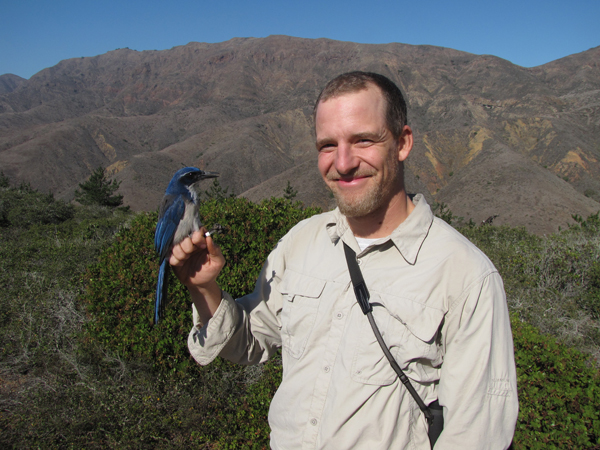
Mario Pesendorfer, a doctoral candidate in the School of Biological Sciences, has been awarded a Smithsonian Institution Fellowship through the Committee on Institutional Cooperation.
The CIC, a consortium of the Big Ten Conference universities plus the University of Chicago, nominates scholars from each member school to compete for one of six Smithsonian predoctoral fellowships. The award winners work with researchers at the Smithsonian Institution in Washington D.C.
Pesendorfer was nominated and selected for a proposal to study seed dispersal performed by members of the Corvid family — crows, jays and magpies.
“I was lucky because we just joined the Big Ten,” said Pesendorfer, referring to the opportunity provided by the CIC.
Pesendorfer came to UNL to work with several species of Corvids in the lab of Alan Kamil, professor of biological sciences, psychology and natural resources, and Alan Bond, research professor in biological sciences. Pesendorfer was initially interested in a behavior called scatter-hoarding in which a bird will take seeds and hide them in multiple places throughout its territory.
“Corvids have really big brains and show complex behavior,” said Pesendorfer.
He found their behavior fascinating and took the opportunity to examine it in the real world by spending a total of 11 months over three years observing Island Scrub-Jays on Santa Cruz Island in California. As Pesendorfer continued his research, he began to consider the ecological implications of the scatter-hoarding behavior.
“If you look at the birds, you also have to look at what they are hiding, which are predominantly acorns, the large seeds of oak trees” said Pesendorfer.
Santa Cruz Island, which is part of the Channel Islands National Park and owned by the Nature Conservancy, was an ideal location to examine the effect of seed dispersal. The land had been farmed for decades, destroying a large proportion of the native habitat, consequently endangering many species that are of conservation concern. All non-native vertebrates — such as cows and pigs — have been removed from the island, and the scatter-hoarding of acrons by the jays is likely to assist in habitat restoration.
The CIC/Smithsonian fellowship will allow Pesendorfer to work with Scott Sillett at the Smithsonian Conservation Biology Institute in Washington, D.C.
Sillett has studied the ecology of birds in the Channel Islands for 10 years and will host Pesendorfer's tenure. Pesendorfer plans to build a mathematical model of scatter-hoarding as seed dispersal and to simulate the impact of the jays' behavior using his field data collected over the last three years.
— Mary Cunningham, Biological Sciences
More details at: http://go.unl.edu/h8h